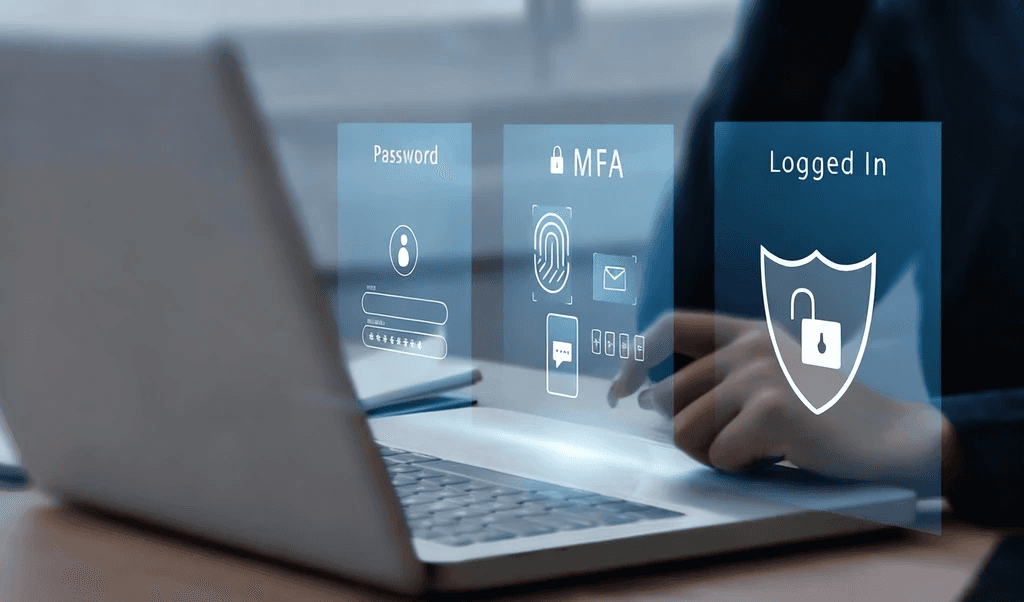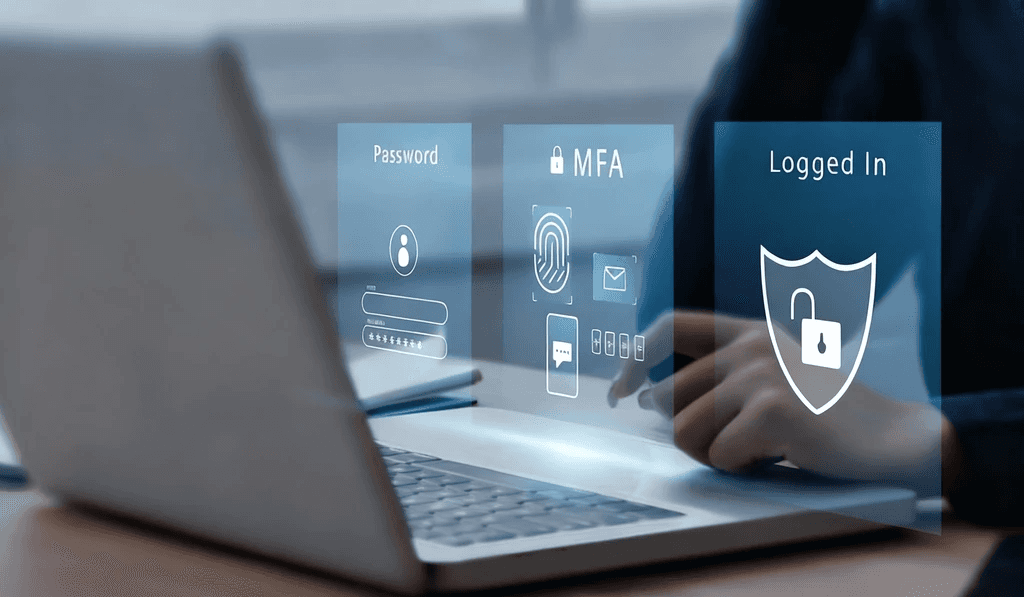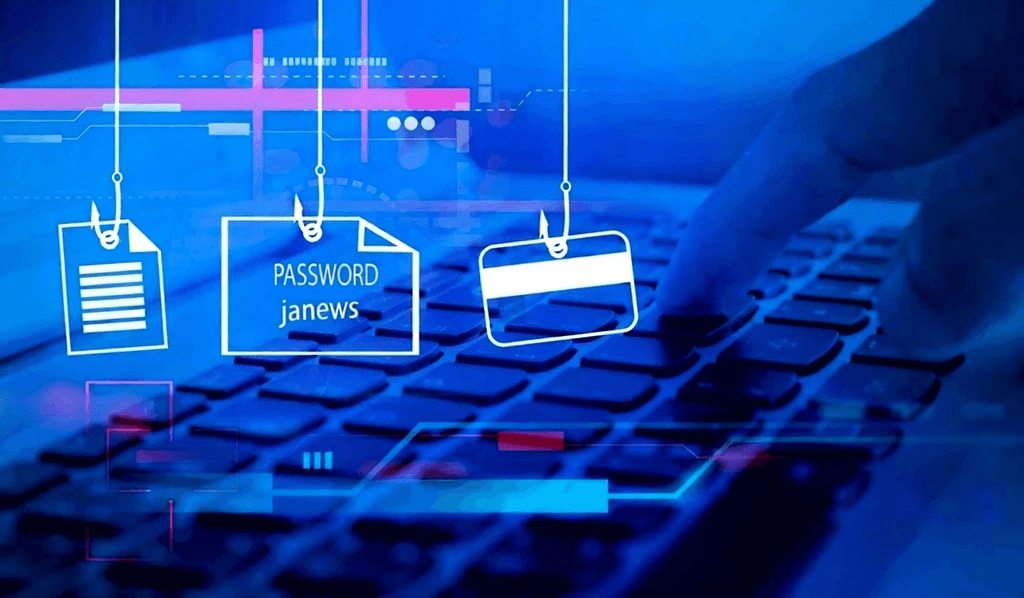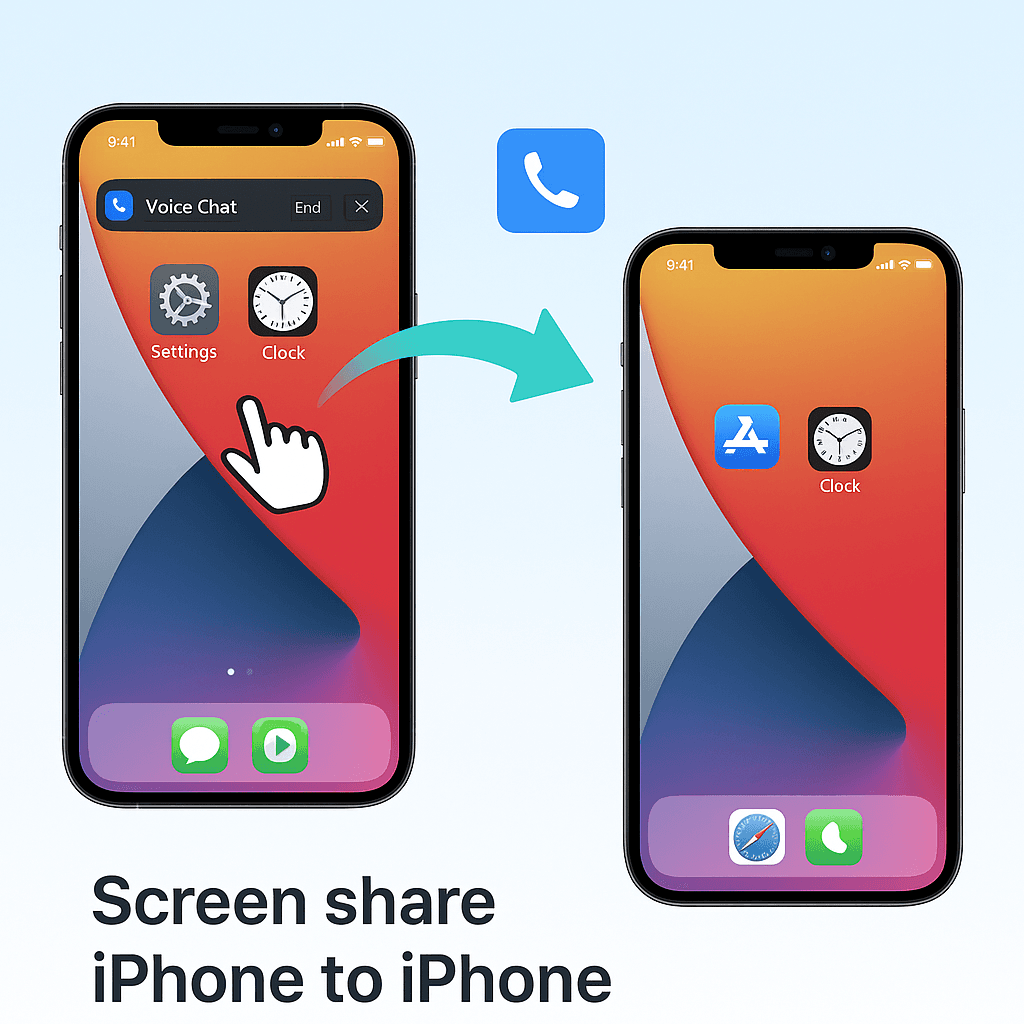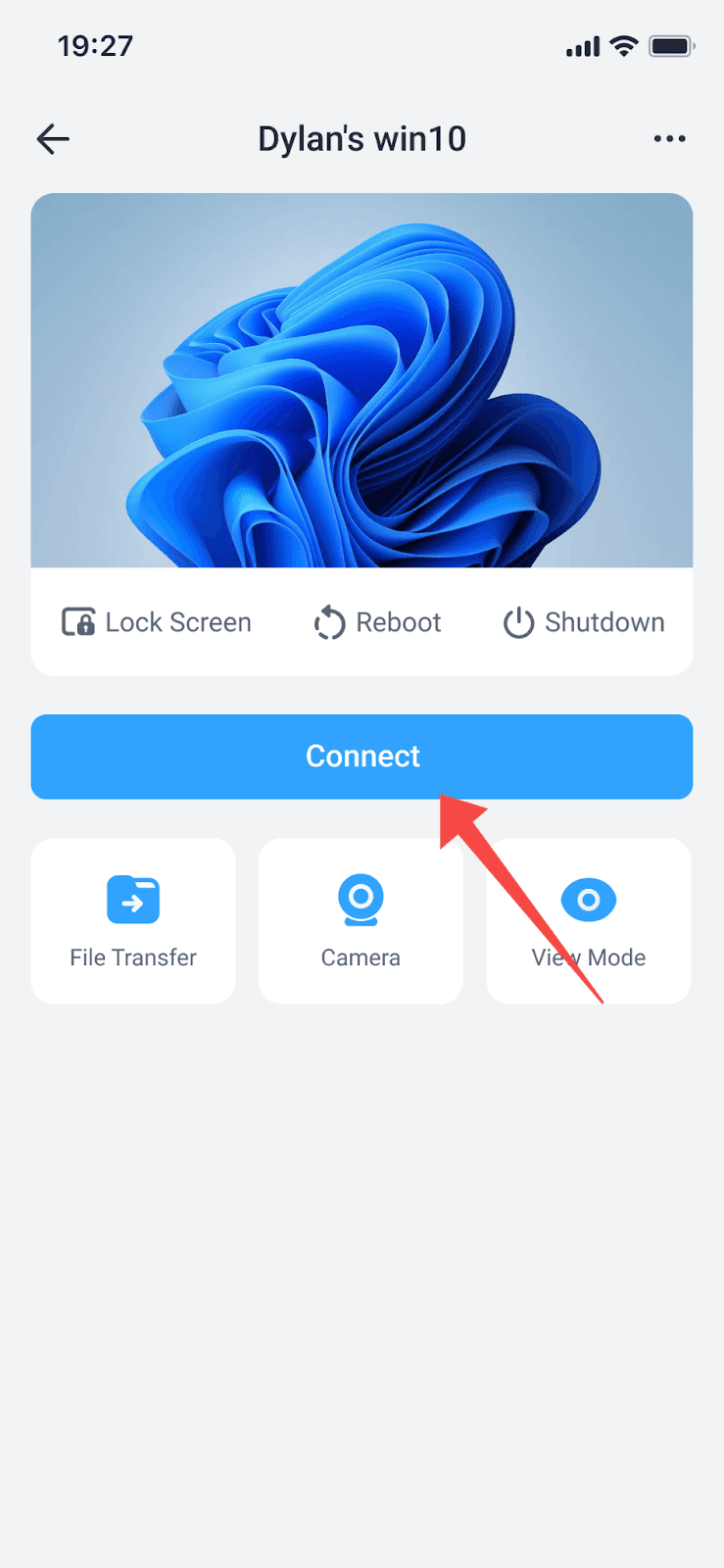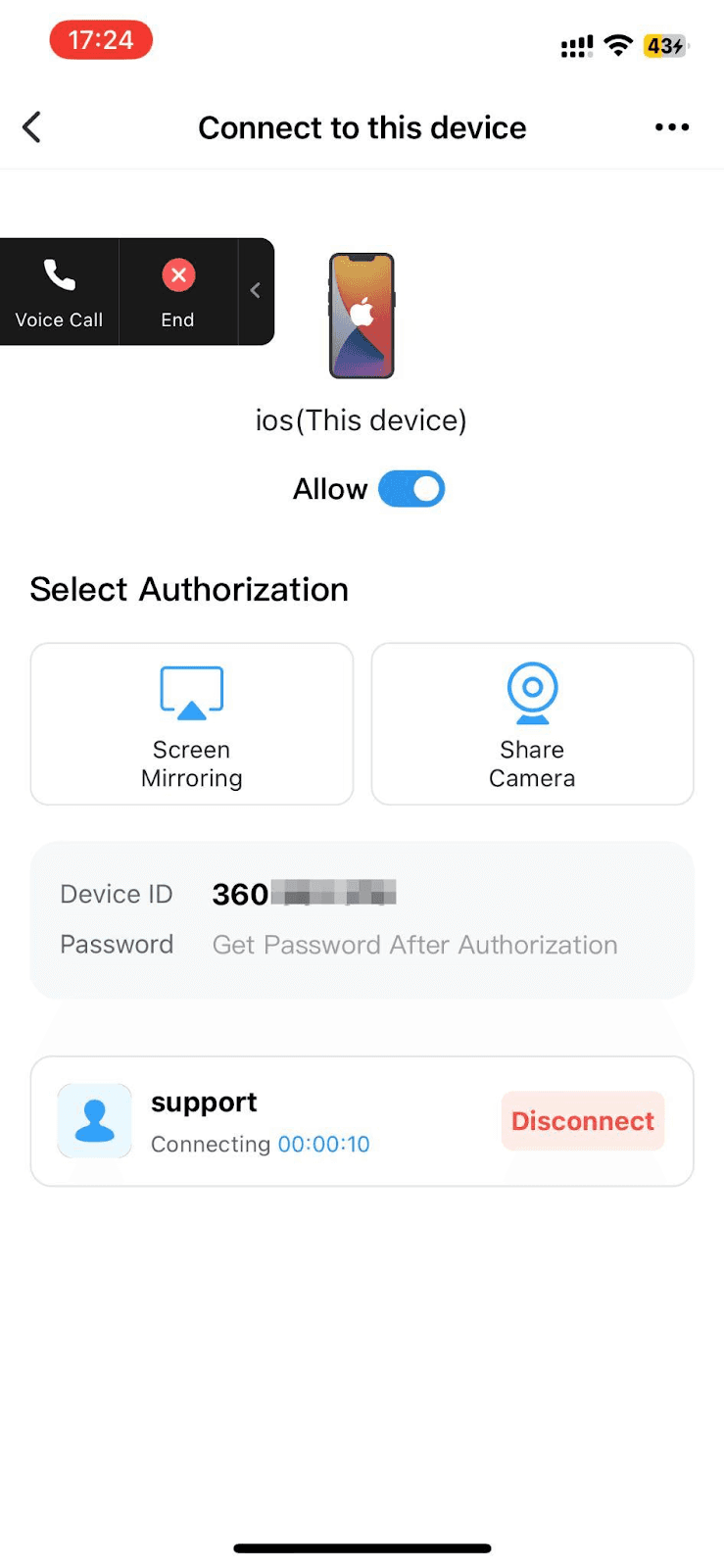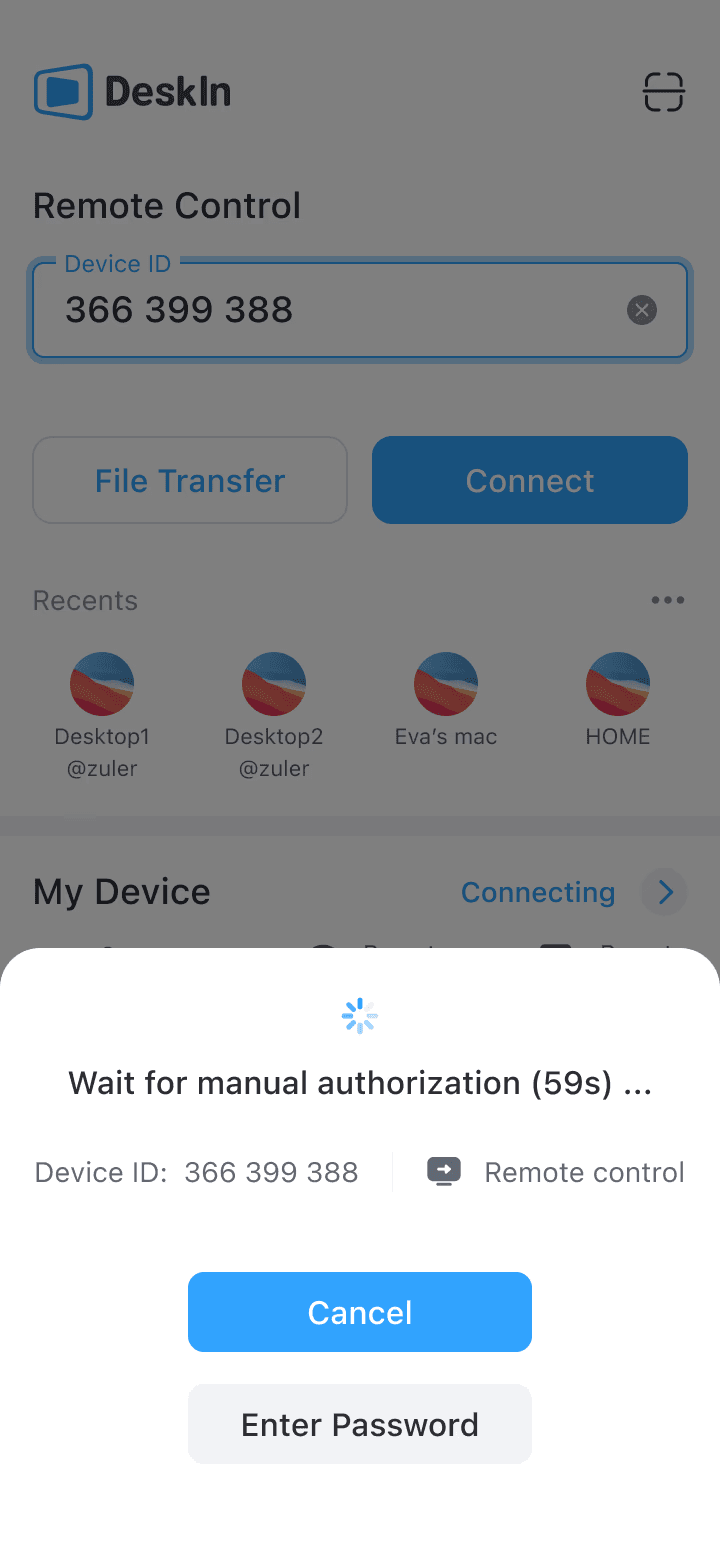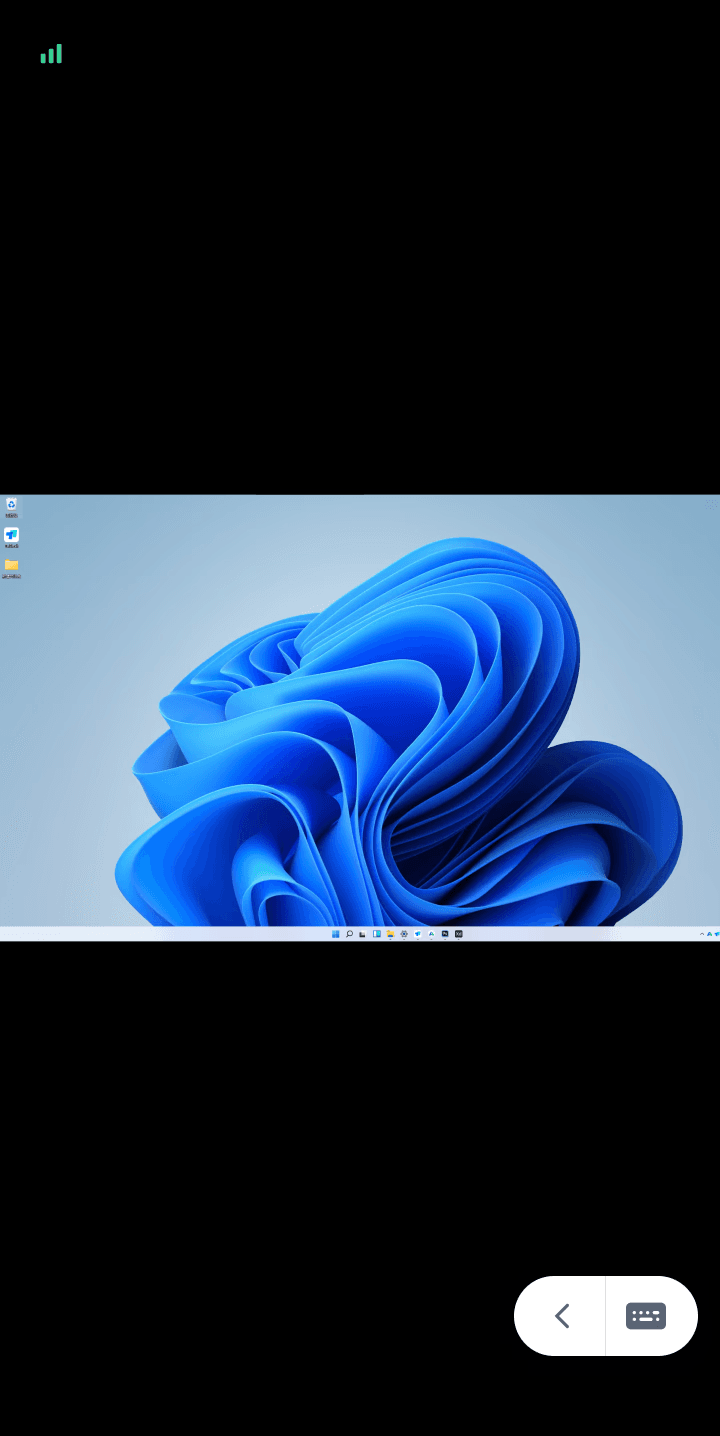お気に入りのカフェでデザイン作業をmacOSで行ったり、クライアントの要求に応じたWindows専用の会計ソフトを使ったりする中で、かつてのMacとWindows間の互換性問題がどれほど進展したかがわかります。エレガントさを求めてMacを選んだものの、Windowsの機能が必要なデジタルノーマッドやリモートワーカー、クリエイティブなプロフェッショナルの方々なら、この苦労をご存知でしょう。
Windows-Macの壁を打破する
今日のプロフェッショナルには妥協しない柔軟性が求められています。国際的なプロジェクトを管理したり、多様なチームと協力したり、Macのエコシステムを好みながらも特定のWindowsのツールが必要だったりする場合、Mac上でWindowsアプリを実行する能力は単なる便利さを超え、ますます境界を失うデジタルワークスペースでの生産性を保つ上で不可欠です。
この包括的なガイドでは、私が20年以上のクロスプラットフォームの課題を経験して得た、Mac上でWindowsアプリを実行するための5つの実証済みの方法を紹介します。このガイドを読み終えた時には、WindowsアプリケーションをMacのワークフローにシームレスに統合する明確な道筋が得られるでしょう。特に、プロフェッショナルがこの一般的な課題に対処する方法を革新しているDeskInに注目します。

仮想マシンはMac上でWindowsを実行するための伝統的な方法であり、macOSシステム内に完全なWindows環境を提供します。
仮想マシンの動作原理
仮想マシンは、Macの処理能力、メモリ、ストレージの一部を割り当てることでコンピュータ内にもう一つのコンピュータを作成し、完全なWindowsオペレーティングシステムを実行します。このサンドボックス化された環境では、専用のWindows PCを使用しているかのように、ほぼすべてのWindowsプログラムを実行することができます。
人気の仮想マシンソリューションには、以下があります:
VMware Fusion:MacとWindows環境のシームレスな統合を提供
Parallels Desktop:パフォーマンスと使いやすいインターフェースで知られる
VirtualBox:機能性のある無料のオープンソースの代替案
ただし、考慮すべき欠点もあります。仮想マシンは多くのシステムリソースを消費し、バッテリー寿命とパフォーマンスに影響を与えます。また、Windowsのライセンスの所有と、実質的に完全な第2のオペレーティングシステムとなるストレージスペースが必要です。
仮想マシンを選ぶ時
仮想マシンは以下の場合に最適です:
包括的なWindows機能が必要な場合
Macに十分な処理能力とメモリがある場合
複数のWindowsアプリケーションに定期的にアクセスする必要がある場合
保存された設定がある永続的なWindows環境が必要な場合
あなたにおすすめ:
Windowsライセンスを必要としない軽量なソリューションを探している方には、「Wine」(「Wine Is Not an Emulator」の略)が魅力的な代替手段を提供します。

Wineのアプローチを理解する
仮想Windows環境を作成するのではなく、WineはWindows API呼び出しをPOSIX呼び出しにオンザフライで変換する互換性レイヤーを提供します。これにより、Windows自体を使用せずに多くのWindowsアプリケーションを直接macOS上で実行できます。
WineにはMac向けのいくつかの実装があります:
Wineskin:Wineの使いやすいラッパー
PlayOnMac:Windowsのゲームやアプリケーションのインストールを簡素化
CrossOver:商業用の、サポートがある洗練されたWineのバージョン
Wineが特に魅力的なのは、仮想マシンと比べてリソース使用量が非常に少ない点です。MacWorldのパフォーマンスベンチマークによると、Wineをベースにしたソリューションは、同様のアプリケーションを実行する仮想マシンに比べて通常35〜50%のメモリを使用します。
Wineの制限
Wineは印象的ですが、すべてのWindowsアプリケーションをサポートするわけではありません。互換性は非常に幅広いです:
古くてシンプルなWindowsプログラムは通常完全に動作する
複雑または新しいアプリケーションには機能制限がある場合がある
特定のハードウェア要件を持つアプリケーションは、まったく動作しない可能性が高い
特にWindowsアプリケーションを使いたいが、仮想マシンのオーバーヘッドを避けたい冒険好きで技術に精通したユーザーには、Wineは優れたソリューションとなり得ますが、忍耐と時折のトラブルシューティングが必要です。

インテルプロセッサを搭載したMacユーザーで最大のWindowsパフォーマンスが必要な場合、AppleのBoot Campは依然として有効な選択肢ですが、Apple Siliconへの切り替えに伴い、徐々に廃止されつつあります。
Boot Campのアプローチ
Boot Campは他のソリューションとは根本的に異なるアプローチを取ります。macOSと並行してWindowsを実行するのではなく、Boot Campを使用するとWindowsを直接Macにインストールし、デュアルブートシステムを作成します。Windowsが必要な時には、コンピュータを再起動し、Windowsに直接ブートすることで、Windowsアプリケーションに対してMacのリソースを100%使用します。
利点は明確です:
Windows PCと同等のネイティブパフォーマンス
すべてのWindowsソフトウェアと周辺機器との完全な互換性
Windows専用のゲームやリソース集約型アプリケーションへのアクセス
問題点は、macOSとWindowsを同時に実行できず、オペレーティングシステムを切り替えるたびに再起動が必要なことです。また、Boot CampはApple Siliconを搭載した新しいMacではサポートされていません(M1、M2、M3チップ)。
👉 常時接続され、どこでもつながり続けるための完全なガイドを見る
Boot Campはあなたに適しているか?
Boot Campを検討すべき状況:
インテルベースのMacを持っている
Windowsアプリケーションに最大のパフォーマンスが必要
オペレーティングシステムを切り替えるたびに再起動するのを気にしない
Windowsソフトウェアとの完全な互換性が必要
クラウドコンピューティングの台頭により、マックに何も大規模にインストールすることなくWindowsアプリケーションにリモートでアクセスするというエレガントな解決策が導入されました。

クラウドWindowsソリューションの動作原理
クラウドベースのWindowsアクセスはリモートサーバー上でホストされているWindowsデスクトップ環境を提供し、マック経由でそれらに接続します。これらのサービスは強力なリモートマシン上でWindowsインストールを管理し、インターフェースをあなたのデバイスにストリーミングします。
人気のオプションには、以下があります:
Windows 365:マイクロソフトのクラウドPCソリューション
Amazon WorkSpaces:AWSの仮想デスクトップインフラストラクチャ
Shadow PC:元々ゲーム用に設計されたが、プロフェッショナルなアプリケーションにも対応可能
Forrester Researchによる最近の調査では、2020年以降、リモートワーカーの43%がクロスプラットフォーム機能のために何らかの形でクラウドコンピューティングソリューションを使用しており、その数は着実に増加しています。
利点:
ローカルWindowsインストールが不要
すべてのデバイスで一貫したエクスペリエンス
強力なローカルハードウェアが不要
常に更新され、維持され続けるWindows環境
制限:
一貫して高品質なインターネット接続が必要
サブスクリプションコストが時間とともに増加する可能性
グラフィックス集約型アプリケーションには潜在的なレイテンシーの問題
クラウドホストワークに関するプライバシーの懸念
クラウドソリューションは特に、複数のデバイスで作業するが一貫したWindowsアクセスが必要なデジタルノマドや非常にモバイルなプロフェッショナルにとって非常に価値があります。
ここで、Windowsの機能が必要なMacユーザー向けにゲームが変わります。

上記のすべての方法を試した私がDeskInを初めて見つけたとき、疑問を持ちました。しかし、この革新的なソリューションは、MacでWindowsを使うという課題への取り組み方を根本的に変えました。
DeskInは、仮想マシンとクラウドコンピューティングのベスト要素を組み合わせ、その多くの制限を排除するハイブリッドアプローチを取っています。その結果、大部分のMacネイティブアプリケーションのようにWindowsアプリケーションを実行できるシームレスな体験が得られます。

👍 DeskInを他と一線を画する特徴
インテリジェントリソース管理:DeskInは特定のWindowsアプリケーションに基づいてメモリとCPU使用量を最適化します
シームレスなUI統合:WindowsアプリはMacアプリと同じデスクトップで並んで表示されます
クロスプラットフォームクリップボード:WindowsとMacアプリ間でのコピー&ペーストが簡単に
ファイルシステム統合:Windowsアプリケーションから直接Macファイルにアクセス大きなファイルを簡単に転送する方法はこちら。
TechBenchmarkによる独立したテストによれば、DeskInは従来の仮想マシンと比べて約40%少ないシステムリソースを使用し、通常のアプリケーションで同等のパフォーマンスを提供します。
DeskInは特に以下のプロフェッショナルに適しています:
専門的なWindowsビジネスソフトウェアを実行する必要がある場合
Windows専用のツールを使用するクライアントや同僚と仕事をする場合
たまにWindows専用のユーティリティにアクセスする必要がある場合
絶え間ないコンテキスト切り替えのない、クリーンで統合されたワークフローを評価する場合

結論:MacでWindowsを実行するための戦略を選ぶ
Mac上でWindowsアプリを実行するこれらの5つのアプローチを探った後、あなたの具体的なニーズに応じて最適なソリューションが決まります:
仮想マシンは最も包括的なWindows体験を提供しますが、リソースの負担が大きいです
WineはWindows自体を使用せずに多くのWindowsアプリケーションとの軽量な互換性を提供します
Boot CampはインテルベースのMacでネイティブWindowsパフォーマンスを提供しますが、再起動が必要です
クラウドソリューションはローカルのインストールが不要で、信頼できるインターネットが必要です
DeskInはパフォーマンス、利便性、統合をバランスよく兼ね備えたシームレスなクロスプラットフォーム体験を提供します
私たちの仕事がますます場所に依存せず、クロスプラットフォーム化する中で、両方のエコシステムを活用する能力は、単に有用であるだけでなく、必要不可欠になります。オペレーティングシステム間の壁はますます薄れつつあり、DeskInのようなソリューションが真に統合されたコンピューティング体験の創造をリードしています。
Macの体験を犠牲にせず生産性を最大化したい現代のプロフェッショナルのために、DeskIn.ioから直接DeskInをダウンロードし、その違いをぜひ体験してみてください。複数のクライアントをサポートしながらさまざまなシステム要件に対応するフリーランサーや、専門的なWindowsツールが必要なリモートワーカーにとっても、DeskInはどこにいても生産的でいるための柔軟性とパフォーマンスを提供します。

お気に入りのカフェでデザイン作業をmacOSで行ったり、クライアントの要求に応じたWindows専用の会計ソフトを使ったりする中で、かつてのMacとWindows間の互換性問題がどれほど進展したかがわかります。エレガントさを求めてMacを選んだものの、Windowsの機能が必要なデジタルノーマッドやリモートワーカー、クリエイティブなプロフェッショナルの方々なら、この苦労をご存知でしょう。
Windows-Macの壁を打破する
今日のプロフェッショナルには妥協しない柔軟性が求められています。国際的なプロジェクトを管理したり、多様なチームと協力したり、Macのエコシステムを好みながらも特定のWindowsのツールが必要だったりする場合、Mac上でWindowsアプリを実行する能力は単なる便利さを超え、ますます境界を失うデジタルワークスペースでの生産性を保つ上で不可欠です。
この包括的なガイドでは、私が20年以上のクロスプラットフォームの課題を経験して得た、Mac上でWindowsアプリを実行するための5つの実証済みの方法を紹介します。このガイドを読み終えた時には、WindowsアプリケーションをMacのワークフローにシームレスに統合する明確な道筋が得られるでしょう。特に、プロフェッショナルがこの一般的な課題に対処する方法を革新しているDeskInに注目します。

仮想マシンはMac上でWindowsを実行するための伝統的な方法であり、macOSシステム内に完全なWindows環境を提供します。
仮想マシンの動作原理
仮想マシンは、Macの処理能力、メモリ、ストレージの一部を割り当てることでコンピュータ内にもう一つのコンピュータを作成し、完全なWindowsオペレーティングシステムを実行します。このサンドボックス化された環境では、専用のWindows PCを使用しているかのように、ほぼすべてのWindowsプログラムを実行することができます。
人気の仮想マシンソリューションには、以下があります:
VMware Fusion:MacとWindows環境のシームレスな統合を提供
Parallels Desktop:パフォーマンスと使いやすいインターフェースで知られる
VirtualBox:機能性のある無料のオープンソースの代替案
ただし、考慮すべき欠点もあります。仮想マシンは多くのシステムリソースを消費し、バッテリー寿命とパフォーマンスに影響を与えます。また、Windowsのライセンスの所有と、実質的に完全な第2のオペレーティングシステムとなるストレージスペースが必要です。
仮想マシンを選ぶ時
仮想マシンは以下の場合に最適です:
包括的なWindows機能が必要な場合
Macに十分な処理能力とメモリがある場合
複数のWindowsアプリケーションに定期的にアクセスする必要がある場合
保存された設定がある永続的なWindows環境が必要な場合
あなたにおすすめ:
Windowsライセンスを必要としない軽量なソリューションを探している方には、「Wine」(「Wine Is Not an Emulator」の略)が魅力的な代替手段を提供します。

Wineのアプローチを理解する
仮想Windows環境を作成するのではなく、WineはWindows API呼び出しをPOSIX呼び出しにオンザフライで変換する互換性レイヤーを提供します。これにより、Windows自体を使用せずに多くのWindowsアプリケーションを直接macOS上で実行できます。
WineにはMac向けのいくつかの実装があります:
Wineskin:Wineの使いやすいラッパー
PlayOnMac:Windowsのゲームやアプリケーションのインストールを簡素化
CrossOver:商業用の、サポートがある洗練されたWineのバージョン
Wineが特に魅力的なのは、仮想マシンと比べてリソース使用量が非常に少ない点です。MacWorldのパフォーマンスベンチマークによると、Wineをベースにしたソリューションは、同様のアプリケーションを実行する仮想マシンに比べて通常35〜50%のメモリを使用します。
Wineの制限
Wineは印象的ですが、すべてのWindowsアプリケーションをサポートするわけではありません。互換性は非常に幅広いです:
古くてシンプルなWindowsプログラムは通常完全に動作する
複雑または新しいアプリケーションには機能制限がある場合がある
特定のハードウェア要件を持つアプリケーションは、まったく動作しない可能性が高い
特にWindowsアプリケーションを使いたいが、仮想マシンのオーバーヘッドを避けたい冒険好きで技術に精通したユーザーには、Wineは優れたソリューションとなり得ますが、忍耐と時折のトラブルシューティングが必要です。

インテルプロセッサを搭載したMacユーザーで最大のWindowsパフォーマンスが必要な場合、AppleのBoot Campは依然として有効な選択肢ですが、Apple Siliconへの切り替えに伴い、徐々に廃止されつつあります。
Boot Campのアプローチ
Boot Campは他のソリューションとは根本的に異なるアプローチを取ります。macOSと並行してWindowsを実行するのではなく、Boot Campを使用するとWindowsを直接Macにインストールし、デュアルブートシステムを作成します。Windowsが必要な時には、コンピュータを再起動し、Windowsに直接ブートすることで、Windowsアプリケーションに対してMacのリソースを100%使用します。
利点は明確です:
Windows PCと同等のネイティブパフォーマンス
すべてのWindowsソフトウェアと周辺機器との完全な互換性
Windows専用のゲームやリソース集約型アプリケーションへのアクセス
問題点は、macOSとWindowsを同時に実行できず、オペレーティングシステムを切り替えるたびに再起動が必要なことです。また、Boot CampはApple Siliconを搭載した新しいMacではサポートされていません(M1、M2、M3チップ)。
👉 常時接続され、どこでもつながり続けるための完全なガイドを見る
Boot Campはあなたに適しているか?
Boot Campを検討すべき状況:
インテルベースのMacを持っている
Windowsアプリケーションに最大のパフォーマンスが必要
オペレーティングシステムを切り替えるたびに再起動するのを気にしない
Windowsソフトウェアとの完全な互換性が必要
クラウドコンピューティングの台頭により、マックに何も大規模にインストールすることなくWindowsアプリケーションにリモートでアクセスするというエレガントな解決策が導入されました。

クラウドWindowsソリューションの動作原理
クラウドベースのWindowsアクセスはリモートサーバー上でホストされているWindowsデスクトップ環境を提供し、マック経由でそれらに接続します。これらのサービスは強力なリモートマシン上でWindowsインストールを管理し、インターフェースをあなたのデバイスにストリーミングします。
人気のオプションには、以下があります:
Windows 365:マイクロソフトのクラウドPCソリューション
Amazon WorkSpaces:AWSの仮想デスクトップインフラストラクチャ
Shadow PC:元々ゲーム用に設計されたが、プロフェッショナルなアプリケーションにも対応可能
Forrester Researchによる最近の調査では、2020年以降、リモートワーカーの43%がクロスプラットフォーム機能のために何らかの形でクラウドコンピューティングソリューションを使用しており、その数は着実に増加しています。
利点:
ローカルWindowsインストールが不要
すべてのデバイスで一貫したエクスペリエンス
強力なローカルハードウェアが不要
常に更新され、維持され続けるWindows環境
制限:
一貫して高品質なインターネット接続が必要
サブスクリプションコストが時間とともに増加する可能性
グラフィックス集約型アプリケーションには潜在的なレイテンシーの問題
クラウドホストワークに関するプライバシーの懸念
クラウドソリューションは特に、複数のデバイスで作業するが一貫したWindowsアクセスが必要なデジタルノマドや非常にモバイルなプロフェッショナルにとって非常に価値があります。
ここで、Windowsの機能が必要なMacユーザー向けにゲームが変わります。

上記のすべての方法を試した私がDeskInを初めて見つけたとき、疑問を持ちました。しかし、この革新的なソリューションは、MacでWindowsを使うという課題への取り組み方を根本的に変えました。
DeskInは、仮想マシンとクラウドコンピューティングのベスト要素を組み合わせ、その多くの制限を排除するハイブリッドアプローチを取っています。その結果、大部分のMacネイティブアプリケーションのようにWindowsアプリケーションを実行できるシームレスな体験が得られます。

👍 DeskInを他と一線を画する特徴
インテリジェントリソース管理:DeskInは特定のWindowsアプリケーションに基づいてメモリとCPU使用量を最適化します
シームレスなUI統合:WindowsアプリはMacアプリと同じデスクトップで並んで表示されます
クロスプラットフォームクリップボード:WindowsとMacアプリ間でのコピー&ペーストが簡単に
ファイルシステム統合:Windowsアプリケーションから直接Macファイルにアクセス大きなファイルを簡単に転送する方法はこちら。
TechBenchmarkによる独立したテストによれば、DeskInは従来の仮想マシンと比べて約40%少ないシステムリソースを使用し、通常のアプリケーションで同等のパフォーマンスを提供します。
DeskInは特に以下のプロフェッショナルに適しています:
専門的なWindowsビジネスソフトウェアを実行する必要がある場合
Windows専用のツールを使用するクライアントや同僚と仕事をする場合
たまにWindows専用のユーティリティにアクセスする必要がある場合
絶え間ないコンテキスト切り替えのない、クリーンで統合されたワークフローを評価する場合

結論:MacでWindowsを実行するための戦略を選ぶ
Mac上でWindowsアプリを実行するこれらの5つのアプローチを探った後、あなたの具体的なニーズに応じて最適なソリューションが決まります:
仮想マシンは最も包括的なWindows体験を提供しますが、リソースの負担が大きいです
WineはWindows自体を使用せずに多くのWindowsアプリケーションとの軽量な互換性を提供します
Boot CampはインテルベースのMacでネイティブWindowsパフォーマンスを提供しますが、再起動が必要です
クラウドソリューションはローカルのインストールが不要で、信頼できるインターネットが必要です
DeskInはパフォーマンス、利便性、統合をバランスよく兼ね備えたシームレスなクロスプラットフォーム体験を提供します
私たちの仕事がますます場所に依存せず、クロスプラットフォーム化する中で、両方のエコシステムを活用する能力は、単に有用であるだけでなく、必要不可欠になります。オペレーティングシステム間の壁はますます薄れつつあり、DeskInのようなソリューションが真に統合されたコンピューティング体験の創造をリードしています。
Macの体験を犠牲にせず生産性を最大化したい現代のプロフェッショナルのために、DeskIn.ioから直接DeskInをダウンロードし、その違いをぜひ体験してみてください。複数のクライアントをサポートしながらさまざまなシステム要件に対応するフリーランサーや、専門的なWindowsツールが必要なリモートワーカーにとっても、DeskInはどこにいても生産的でいるための柔軟性とパフォーマンスを提供します。


一度に叶う
遊びも仕事も
DeskInリモートゲーム
今なら14.32米ドル 🎉 7月16日から31日限定
プロモーションコードを追加してください: deskinsummer1



